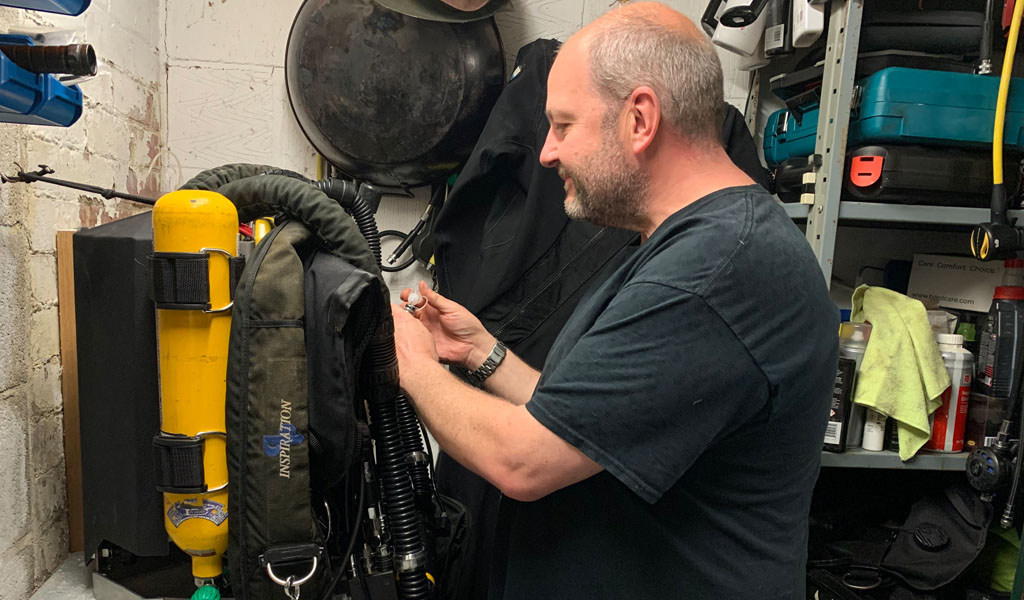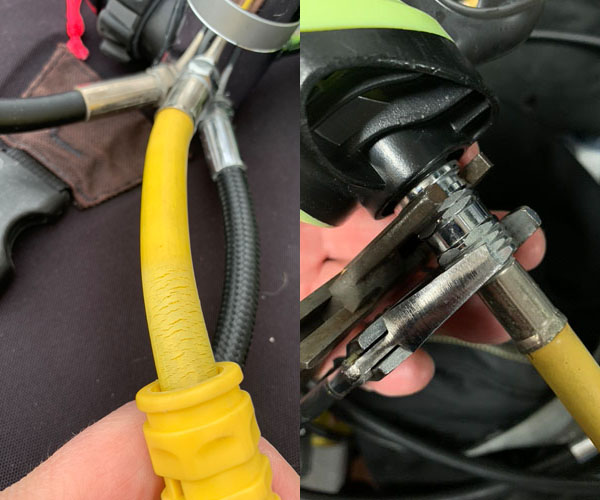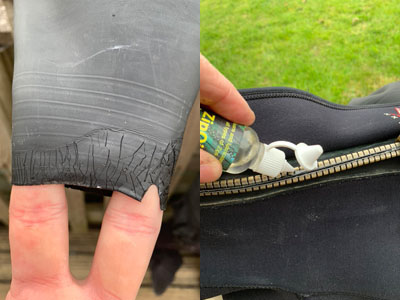
Former BSAC Chair Alex (Woz) Warzynski shares his tips on keeping your kit in good condition though this extended surface interval we find ourselves in.
As I write this, sat at home, I should be falling off a perfectly serviceable boat in the Sound of Mull on the first “away trip” of the year. In these strange times, we are all distancing ourselves from each other, chatting through screens and across neighbour’s fences.
My kit, like everyone else’s, is crispy dry and hasn’t seen water since the end of March. While we don’t have much to do apart from walk the dog and hammer Netflix, now is an ideal time to make sure that when the lockdown lifts, we can hit the water ready to dive.
My dive kit store is a set of industrial steel shelving, ideal for plastic storage boxes and dive bags. While it isn’t being used, it’s an ideal time to get it all out and work out what is worth keeping, binning, selling, or giving away, or maybe filling in a gap in your kit that you have been hankering over. It’s also a good time to spot kit that might need a bit of a look at, cylinders that will need a test, and nip round all your kit to make sure it’s ready to go.
Diary your cylinder tests
Cylinders need a hydro test every five years, with a visual inspection after 2.5. If oxygen cleaned, this is on a 15-month cycle. I put all of my cylinder tests on my Google calendar- it’s easy to note down the test date then put a 15-month repeat interval on the entry.
 Checking hoses
Checking hoses
Regulator hoses can perish over time, so a close look at them to see if they are cracking is a quick and easy job, gently bending the hose to open up any cracks. If they are cracked, split or bulging, then the hose will need replacing by unscrewing it from the first stage and removing the second stage using a pair of spanners, one of them a thin-jawed one if needed. It’s also worth noting the service intervals on your calendar so you can make sure they head off for a service well in time. A quick stretch of the mouthpiece rubber will reveal any holes or chewed tabs, and a tug on the tie wrap will spot if this is damaged.
 Extend the life of your drysuit
Extend the life of your drysuit
Over winter, drysuit seals can perish, so a stretch to spot any crazing will give you an early warning that they need changing. The zip is the most expensive part of the suit, so keeping care of this will extend its life. If the rubber is splitting and a crack is developing between the teeth, it will eventually leak. The other common point of failure is the rubber snapping between the teeth. If it does, it’s really easy for the slider to rip a tooth out. To minimise stressing the zip, for a rear suit I use a padded hanger and hang it up with the zip closed. For a front zip, I use a piece of drainpipe with rope around it to create a nice, large shoulder radius and hang the suit up with the zip open. As zips are used, they will often go “hairy” so a careful trim with sharp scissors and a seal with a lighter will neaten this up. Make sure you do this before lubricating it as I once set fire to a whole zip!
It’s also a good time to check the inflate button is nice and smooth and get some silicone grease on the mechanism if it isn’t. I also like to squirt a bit of pure mineral oil (Ikea chopping board oil is the cheapest I’ve found) in the direct feed hose collar to keep it silky smooth.
Remember mask and fin straps
Straps on masks and fins can perish, so a stretch and check is a quick and easy way of catching potential failures, replacing early. I’m a big fan of spring fin straps as there is nothing more annoying than when putting your fins on, the last thing you do before you hit the water, to have them snap on you. If your mask is looking a bit grim with wildlife growing in it, a session with the dishes in a dishwasher will make it good as new.
Your trusted computer
Computer batteries are best checked with them cold rather than in a warm house as the battery chemistry is at its weakest when the temperature drops. Most are user-replaceable, or if not, it’s another thing for the service pile when the dive shops open again.
Got a save-a-dive box?
If you’re off on a trip and need to do some running repairs, you’re going to need some tools. Now I have my “lucky toolbox”- when I take it, I never need it. When I’ve left it at home, something always needs mending. Head over to another of Woz's articles - What's in the box? - where Woz shares his tips on how a well-equipped toolbox (he shares what's in his!) can save a dive or dive trip.
So, a few simple things while you’re wondering what to do next during lockdown will get you in the water with hopefully, the minimum of fuss.
When this is all over and we can dive again, please take things slowly as we are all a bit rusty. Hopefully, I’ll see you at a dive site soon.
Check out BSAC Kit partners
Take a look at BSAC's Kit partners for offers and discounts on kit. Go on, you're worth it!

 Author: Alex (Woz) Warzynski | Posted 27 Apr 2020
Author: Alex (Woz) Warzynski | Posted 27 Apr 2020



